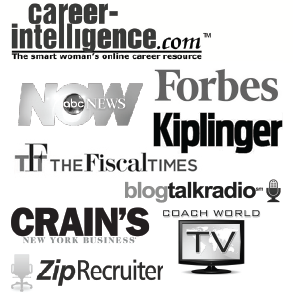
May 7, 2015 | confidence, gender roles in business, leadership, personal development, women
Women need to be respected at work. The most direct path to generating such respect, while rarely discussed, is all about creating a compelling personal brand. What’s the connection? Both put a premium on trust and consistency. Aside from your ability to communicate effectively, deliberately creating a brand that emanates from your core values will yield the sharpest tool in your toolbox. Become a truly effective communicator, and people may listen. You will be heard. But, to inspire people to follow, perform for and invest in you, you’ll need their respect. A professional’s brand is her word. So, what IS your professional brand? Have you given this any thought? If not, here’s a great place to start: Understand that a great brand stems from core values. Make a list of your most fundamental values and beliefs. These should be values that without which, you wouldn’t be who you are. They need to be rock solid, with all else stemming from there. Next, list your competencies, those for which you want to be known. Finally, create your own visual, your own schematic of what your brand looks like. As an example, I think of mine as a golf ball that encases… a hard super ball center but then has all those rubber band things wrapping around and around it. But that’s mine. What’s yours? Grab an accountability partner and do this exercise. It will change the way you show up at work. So far in this article series, we’ve discussed: why the current efforts thrown at increasing the number of women leaders aren’t working the three problems women professionals encounter when...

Jan 28, 2015 | coaching, confidence, critical thinking, gender roles in business, leadership, personal development, women
Recently, I received a thank you note from an executive in response to the professional development series she invited me to deliver to women in her industry. The note excitedly championed the “dtkMindset” I imparted to the group — a dtkSignature and a perfect term which I thank her for coining. What did she mean by the “dtkMindSet,” especially as it pertains to professional women? In a nutshell, it’s decidedly NOT a palliative fix, road map, template or formula — there are plenty of those around for the undiscriminating consumer — but rather it’s a way of thinking that deploys the power of and desirability of women’s innate brain wiring. ‘Getting’ the MindSet was already exciting but what was exciting to me was witnessing participants’ making the leap from MindSet to MindShift. And it’s that shift in women’s thinking that is so critical to improving women’s professional experience as well as their progress. The fact is the number of women in leadership positions — 17% — is dismal and the needle has been stuck there since I started tracking this in 2005. Between 2005 and 2015, smart people have tried to crack this but the problem is that sadly, their institutional or male-reliant remedies only address the externalities. Instead, it’s the shifting to a dtkMindset that’s critical especially for professional women interested in advancing through the ranks and into leadership positions. In addition to women’s more actively managing their own careers, the dtkMindset shows women that it’s the inside-out work that will ultimately make the difference. Women and confidence Confidence is a recurrent theme with women and with those...

Oct 20, 2014 | confidence, gender roles in business, leadership, women
In late June, the Boston Business Journal published an article titled, “There’s Light on the Horizon for Increasing Women on Boards“. The article highlighted a conference in Boston at which Mayor Marty Walsh and Gov. Deval Patrick were in attendance — along with 125 CEO’s, business people and other people of influence — all coming together to discuss how to get more women on corporate boards. Not a new initiative, of course. In fact, the article mentioned that The Boston Club had been “at this for 35-plus years.” I’ve been shouting the business case for increasing women on boards for years in my own practice. The good news is that people, men and women in varying levels of leadership, understand the business imperative for gender parity. Bottom line: Women leaders are good for business. If anyone’s still arguing that point, I trust they are only doing so in 1950 sitcom re-runs. However, understanding of and visibility for an initiative are just the first hurdles to jump. Implementation, follow through and action are what move the needle. The article mentions that “the momentum is shifting.” And, in the end, this meeting of the minds had created some resolutions and action plans that leave me hopeful. Those leading this conference impressed me with their willingness to expose the dynamic inherent in the challenge of legislating change. They noted that this would be a dual commitment between what leaders do individually and what they do in conjunction. What they left off, however is what women themselves must do in order for American companies to see what the author and I agree are “long overdue results.” It’s not just a top down enterprise, it’s also bottom up. There are, indeed, ‘binders full of qualified women’ but they need to be vocal and give us the full benefit of their wisdom...

Jun 6, 2014 | coaching, confidence, critical thinking, gender roles in business, leadership, women
Lots of recent discussion about what I’ve long referred to as the confidence conundrum — how much is enough, how much is too much, how do we get it, why does he/she have it and I don’t— particularly as it pertains to women in leadership. While this is certainly not a new topic, two national journalists have written a book hoping to “crack” the “confidence code”…once and for all. See an overview here: Journalists Kay and Shipman urge women to close the confidence gap. Not that simple. Despite ongoing efforts to capture it, achieving a state of balanced confidence continues to elude even the smartest and most successful. Which is why hot and cold running trainers and coaches have created a self-perpetuating industry of quick fix offerings that a) capitalize on fear and b) never get at the more fundamental issues, the true drivers of authentic and sustainable confidence. In fact, their approach is merely palliative and therefore short-lived: they drill women on using bolder verbiage, on deploying more assertive body language, on acting ‘as if;’ indeed, all are legitimate interventions and confidence boosters** but are also wholly insufficient. The problem and why it persists, I submit, is that we’ve been thinking and going about this all wrong. In 2013, I was asked to address the East Tennessee Women’s Leadership Summit on this very topic and had the distinct privilege of shaking up the status quo with an original and innovative paradigm: basically, confidence isn’t a commodity to be bought, sold, borrowed, loaned or lusted after and there simply is no code to break. Instead, it’s a constellation of...





 Dani Ticktin Koplik —
Leadership consultant, executive coach, change agent and passionate professional development expert and speaker. You can learn more about Dani and her clients by visiting dtkBio page.
Dani Ticktin Koplik —
Leadership consultant, executive coach, change agent and passionate professional development expert and speaker. You can learn more about Dani and her clients by visiting dtkBio page. 